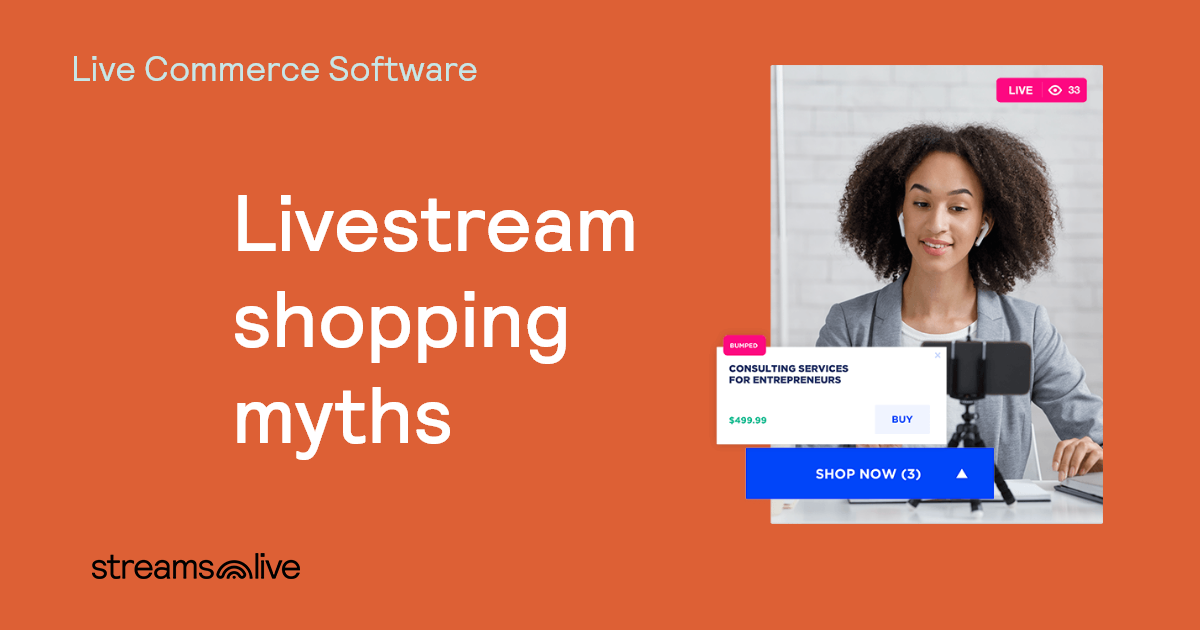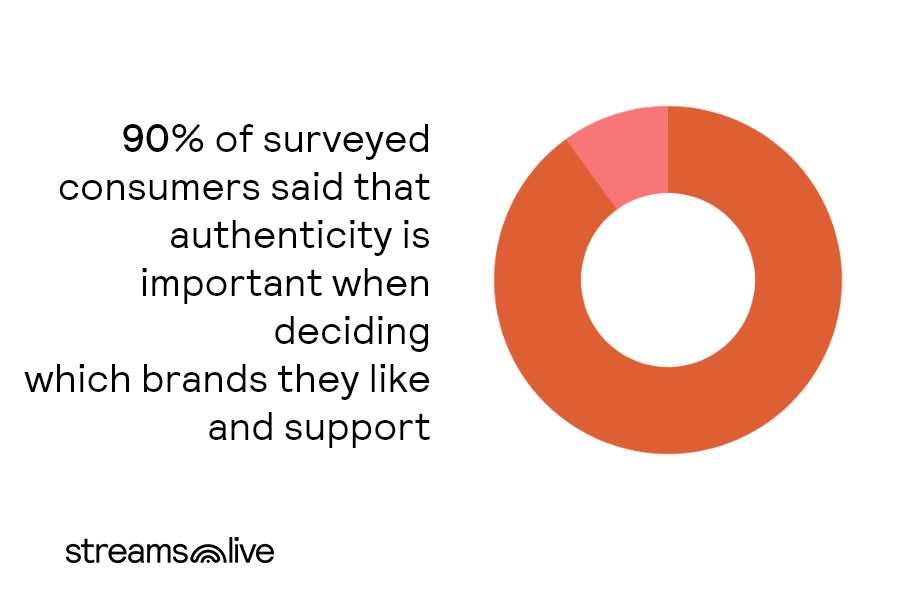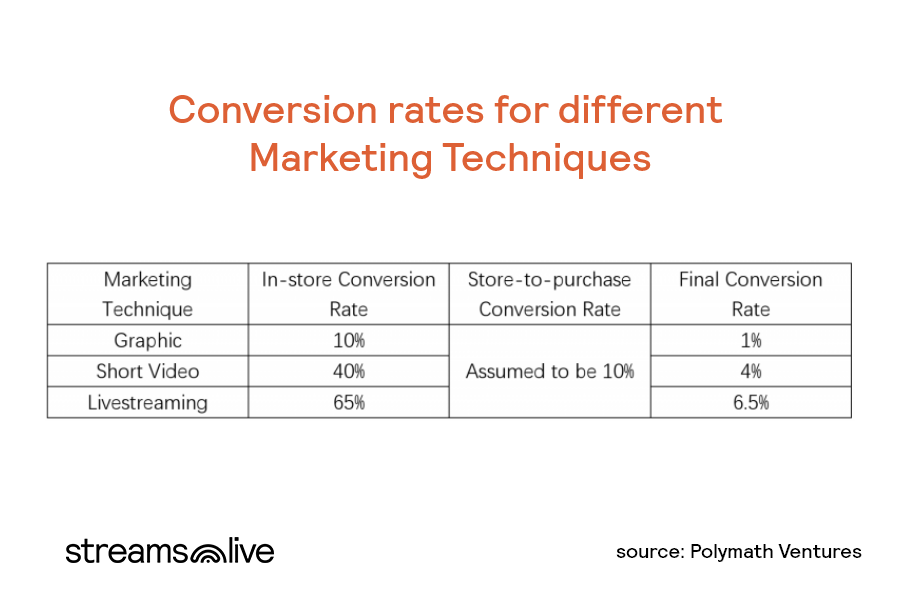
Livestream shopping, also known as live or video shopping, helps businesses to showcase products in front of an online audience, engage the viewers, and sell the products straight from this experience. But like any other trend, it too is surrounded by misconception and false expectations. Today, we are going to bust 4 of the most common livestream shopping myths we have heard of.
#1. Livestream shopping is QVC or Teleshopping 2.0
Its association with TV Shopping channels seems natural, as it is the easiest way to explain the principles of video commerce. In the old days, we had a TV video show where someone showcased a product and people could buy it by dialing a specific phone number. Now, because the technology evolved, we don’t need to call that number, we can purchase the product online, making the process even easier.
Technically, live commerce is still video shopping. But it definitely is not your usual ’70s TV shopping.
This new way of shopping emerged in China. It was never designed as a better TV shopping option, because there was no big TV shopping market there. Live commerce emerged in order to solve issues in digital shopping. It’s no coincidence it emerged in China and it’s no coincidence that it is now conquering the world. Here is why:
The Chinese eCommerce market is the biggest in the world, and it stems a fierce competition. Businesses need to constantly be innovating and finding new ways of engaging the customers.
While eCommerce processes were initially designed for desktops and laptops, the mass digitalization of the Chinese market was made through mobile devices. As cart abandonment rates lurk around 75% (even higher on mobile devices), a shopping alternative to address this problem had to be found. So Livestream shopping becomes an important pillar for China’s fizzy eCommerce market as it naturally addresses some of the main issues regarding product page conversion.
Livestream Shopping myth #2: Hosting a Livestream shopping session is expensive
Here’s one of the most common myths: producing a video shopping session is expensive. Why is that? Because professional filming equipment can be expensive, ranging from hundreds to tens of thousands of dollars. Add a professional team behind this expensive hardware equipment, the cost of a studio, and you will surely think that Livestream Shopping sessions are available solely to brands with huge marketing budgets.
But this is wrong.
The truth is you can host a Livestream Shopping session without having to invest into hardware. Or production. Or a studio. I mean these are all nice but they are not a must. Nowadays, day-to-day smartphones have built-in cameras powerful enough to make professional crews from a few years ago jealous.
Even if you do decide to create a special set-up for this shopping session, you can do it without having to put pressure on your marketing budget. Just look at what you actually need to start a live stream shopping session.
#3. You need an experienced presenter to host your session
As you probably guessed already, you actually don’t. There are many Livestream Shopping event formats, and some of them involve a professional host or an internet influencer that engages your audience. Truth be told, any member of your team can go live in front of your audience. And on the long term, this strategy can prove itself more lucrative than those involving hired professional presenters.
Why?
In the experiential economy we live in, goods are commodities. It’s the brand authenticity that became THE important factor customers look at before deciding to support (with their money) a specific brand. This is where live commerce really shines. It helps viewers to really get to know you and your team. It shows the values you stand for and this creates a sense of authenticity around your brand. Not only will this help convert viewers into customers, but it will also create a community around your brand.

Myth #4. Live video commerce doesn’t convert
As video has been traditionally used for creating awareness (thus interacting with clients in the upper part of the sales funnel), some may believe that it’s hard for a video to convert viewers into buyers within one single session.
On the contrary, Livestream Shopping proved to be the digital marketing strategy with the highest numbers when it comes to conversions.

Here is why.
Authenticity, mentioned above, plays an important role. Another huge advantage is the brand’s ability to transform their website into an owned social media channel, where people can interact with the host or one another, live. Live video shopping allows you to use one of the most important forces in sales: momentum. During the online shopping process, 85% of customers have at least one question they need to find an answer to before purchasing. With live video commerce, you can answer it live, when it counts the most: when they are ready to buy. This helps you use momentum in your favour.
Final thoughts
Livestream shopping is an amazing and new eCommerce channel. It’s transforming the old, faceless digital commerce into a live, engaging experience, helping customers get a better sense of the products they purchase online. It gives any brand a chance to interact with its customers live and to help them have a better understanding of the products and services they are offering.





